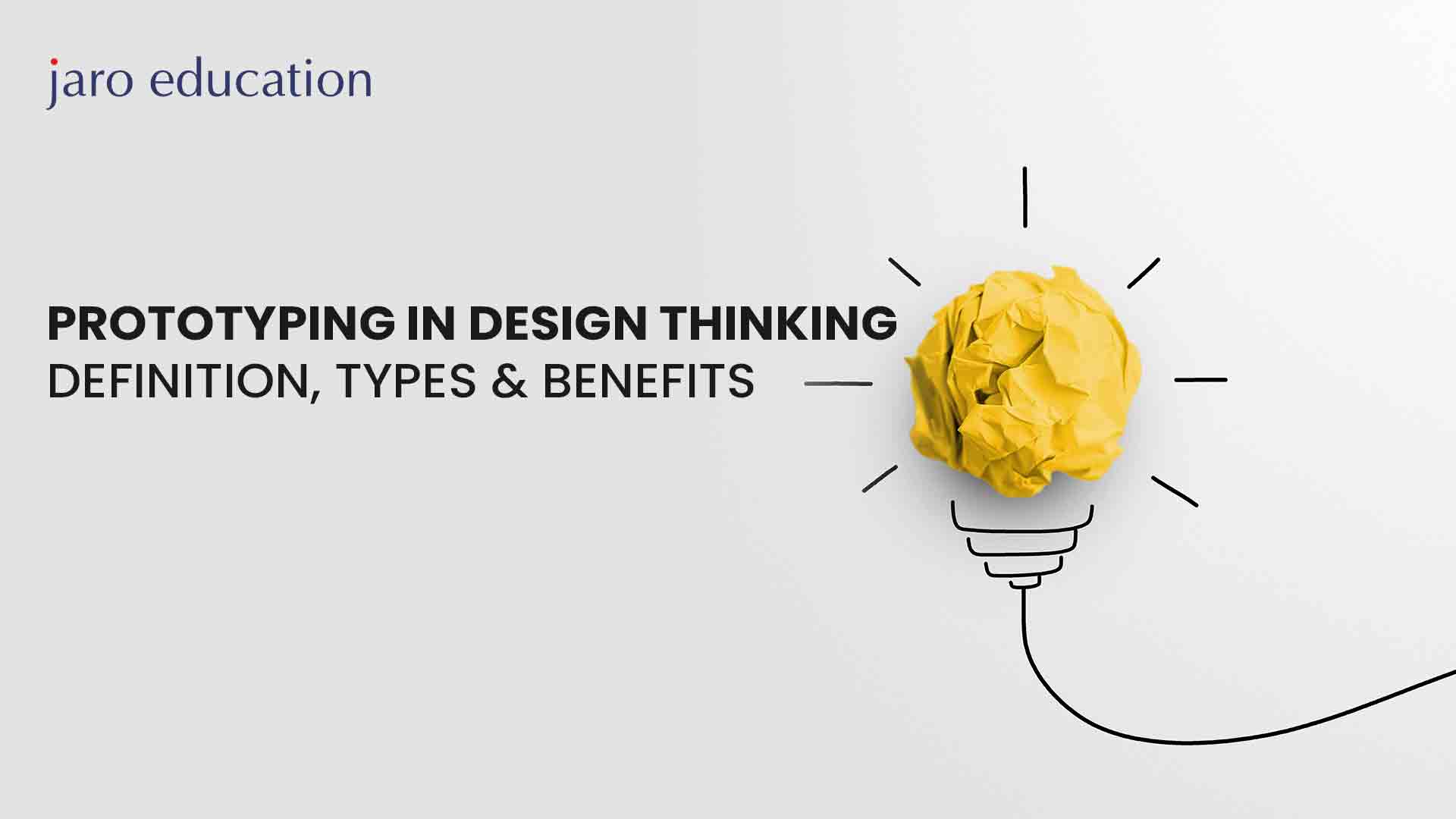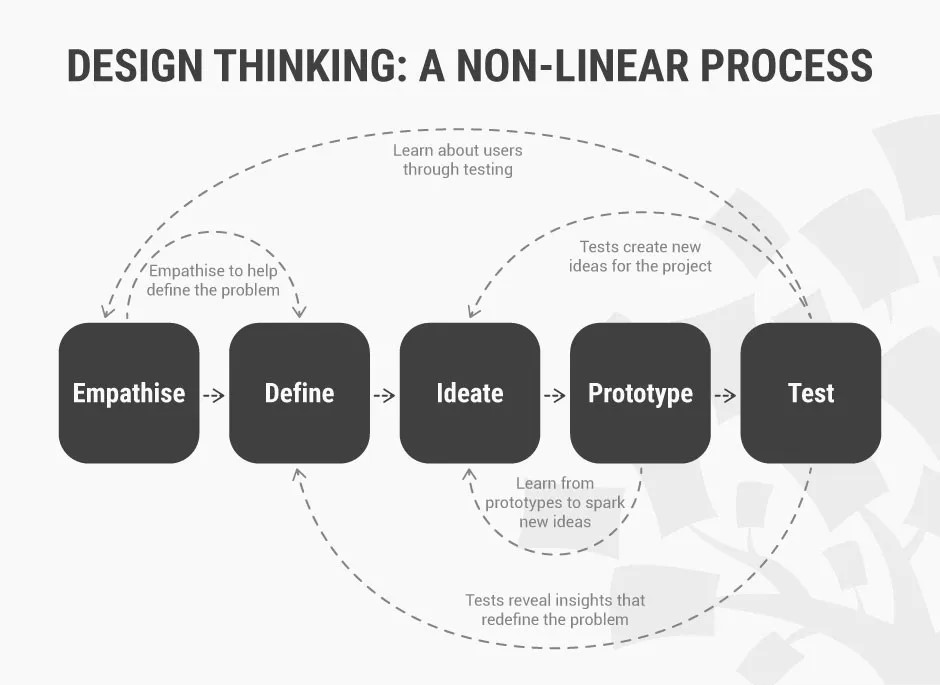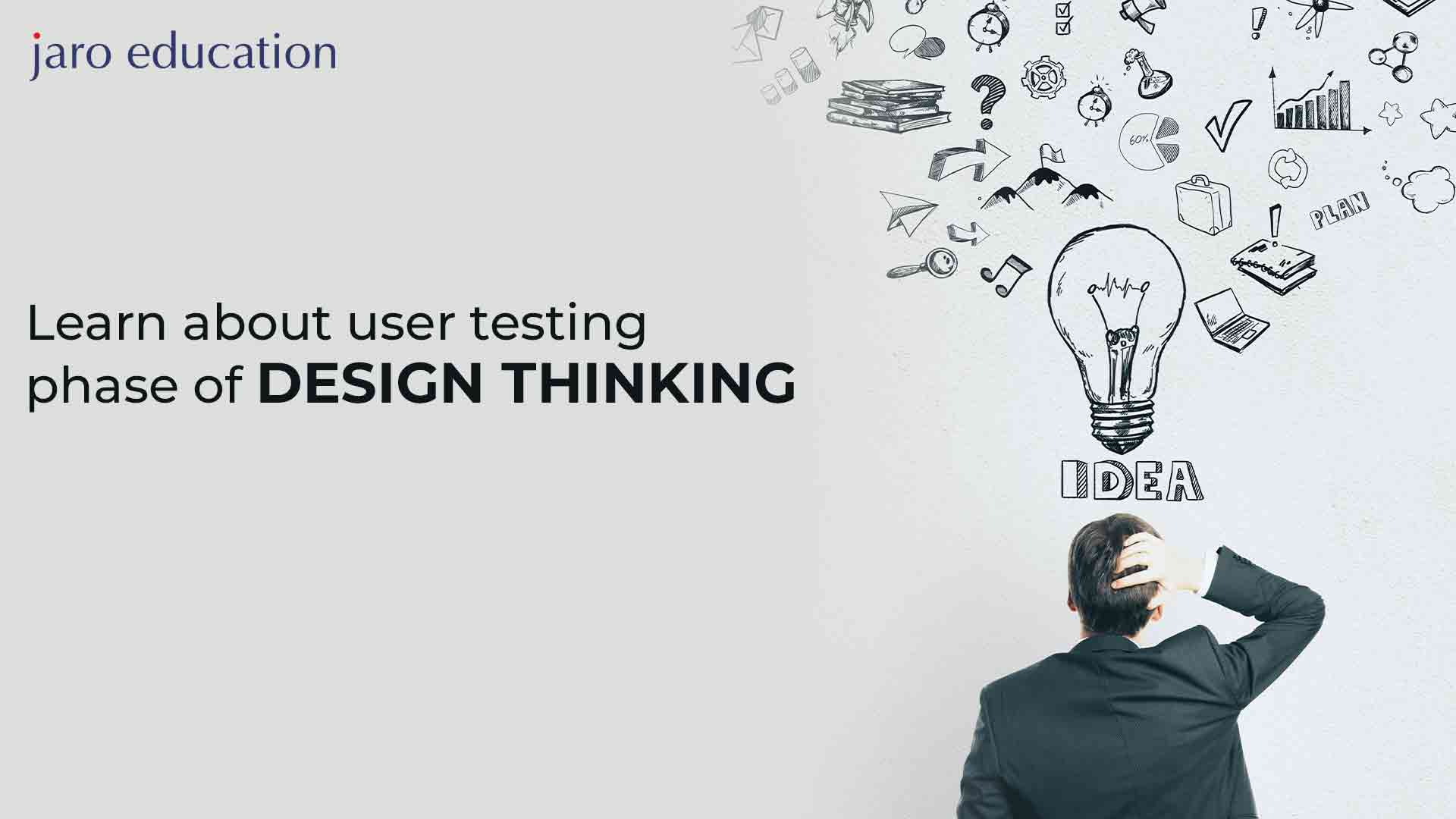
- jaro education
- 9, March 2024
- 2:00 pm
Committing to developing a new product in a competitive environment involves various productive steps. However, one must be careful not to encourage overenthusiasm about the project.
Planning and researching the ideas before implementing them ensures your brand can deliver a product relevant to your objectives. The essence of a prototype design comes in handy in these circumstances. This framework implements your productive ideas into tangible forms and explores the possibilities of real-world effects before the eventual execution.
The following blog is a summation of the various types of prototypes in design thinking, stressing their relevance and related benefits.
Prototyping: A Brief Explanation
Prototypes relate to primary samples, releases, or models of viable products prepared to test a process or perception. Users can employ semantics in several situations, including designing, software programming, and electronics. A prototype design pattern is usually a prevalent alternative for system analysts and industry-specific users to improve the accuracy of a fresh design.
Table of Contents
Prototyping involves a critical design thinking process and finds its common usage in the final testing stage. It is evident that every commercial product has a target audience, and the primary aim of the product concept is to resolve any inherent issues in favor of the customers to any extent. With this in view, prototype experts and apprentices of a company can assist in creating a working model or a mock-up of the product in the pipeline to determine whether it is a problem-solving method, called a prototype design, and company management tests this model with potential users and stakeholders. Eventually, a prototype design pattern enables the business to test the authenticity of the existing design and examine the opinions of trial users regarding the product in the process of future release.
Therefore, a prototype correlates with a product designed to confirm concepts and changes until it coincides with the final product. The business authorities can mock up every property and activity compared to the fully developed product, verify if the idea aligns with it, and validate the overall UX (user experience) approach.
The prototype design pattern allows company stakeholders to create user-friendly, miniature prototypes of conceived products. They can also use them to witness, document, and scrutinize user performance levels or their general behavioral patterns and responses to the all-inclusive design. Subsequently, businesses can make precise modifications or alterations in the right course.
A prototype may take any form or shape. It can range from uncomplicated sketches and storyboards to coarse paper or role-playing models that integrate a service offering. These prototypes may be optional for full-fledged products. A specialist in this domain can prototype a product segment to sample-test that solution fragment. Usually, prototypes seem quick and uneven, designed for testing and interpreting in the primary phases. Occasionally, they are entirely conceived, developed, and lined up for pilot appraisals leading to the final stages of the ongoing project.
A reliable prototype design helps early product replication during design thinking, corroborating its elemental functionality.

*interaction-design.org
Implications of Prototype in Design Thinking
The sole purpose of a prototype in design thinking is to experiment with products and their inherent elements before pre-planned market launching. Prototypes signify samples or simulations of final products used as testing devices. It intends to test products before investing substantial time and resources and venturing into large-scale manufacturing.
Benefits of Prototyping
One of the most significant aspects of prototyping is that it triggers empathy for the target audience. Here, designing software or consumer products for human use may be similar to a great extent. The company management must note that a product created with little or no understanding of what the customer wants can lead to the assembly of irrelevant features, substandard design and plenty of other potential issues.
However, with efficient prototyping, the manufacturing company can enjoy a host of benefits, which include:
1. Assessment of Technical Feasibility
A prototype design makes it possible to manifest a concept and assess which elements pose problems in implementation. Prototyping can, therefore, pick out unforeseen technical, financial or physical hindrances.
2. Improvement in Website Quality
An effectively crafted prototype will cater to the following positive dimensions:
- Streamlining testing for website usability
- Foolproof website navigation
- Easy accessibility of website information
- Ascertaining the exact positioning of visual accents, i.e., what should be the initial visibility of users
3. Presentation of Ideas to Customers
An efficient prototype design pattern enables businesses to demonstrate their future products to prospective clients before they arrive in the consumer market. Additionally, this strategy helps them plan their marketing blueprint and layout in the right direction, and the management may now initiate pre-sale activities.
4. Risk Alleviation
Various projects with an all-encompassing prototyping methodology are at a reduced risk than projects that do not adopt prototyping prerequisites. The reason is that prototyping processes are directly proportionate to the impacts of project resources, budget, and time spent. With a flawless prototype design pattern, it has become feasible to approximate the time and resources required for development.
5. Iteration at Reduced Costs
Requisite data collected from prospective audiences with the support of prototyping technology allows distinct improvement in product development until an optimal product category is in place. In this respect, a decent idea is to opt for numerous prototypes before deciding on mass production of the final product. It will help curtail surplus costs of unsold items and reprogramming on the shop floor.
6. Simulation of Future Product
The most exceptional advantage of prototyping is that it creates an appropriate final product model. This significant feature motivates customers to invest in the relevant product before allocating resources for implementation. Production managers can find design fallacies and mend them before harnessing the production schedules.
7. Provision of Intense Feedback
An efficient prototype design helps receive intense customer feedback on the product’s intended qualities. This feedback seems critical to familiarising oneself with user expectations and business requirements and gaining a precise idea of the product’s performance.
8. Planning and Implementation
Effective prototyping helps the production crew receive proactive and vital information. This crucial communication enables the planning of the process for stage-wise implementation. An error-free prototype design pattern creates user stories and ably stresses user needs. These efforts bring far-reaching returns to scrum teams.
9. Speediness and Simplicity
Prototype professionals and management trainees in an organisation can promptly develop a ready-to-implement prototype design pattern on paper without prior knowledge if they can interpret the logic and reasoning behind the product concept.
Various Types of Prototypes In Design Thinking
There are various types of prototypes in design thinking. Here are a few selective classes that prototype experts in a commercial organisation can access:
1. Paper Interface
An array of prototype methods is available to reach the final design and development stage. These prototype design elements include mobile apps, digital products related to websites, web services, and other screen-related products. Paper interfaces are quick and convenient for early-stage prototyping for these digital products. The designated personnel in a company can sketch, draw, or shrink usable segments of a user interface, similar to the functioning of a text field or drop-down menu.
2. Diagrams and Sketches
Sketching is the most fundamental type of prototyping. For professionals in this sphere, it requires minimum labor and an artistic mindset is not mandatory to get the results. Prototyping experts use sketches to initiate the process of visualizing and developing a new product and share the design thinking outcome with the team members for more constructive ideas through future discussions.
3. Role-Playing
Role-playing is the term used in place of experiential prototyping. It supports business authorities in exploring the possibilities within the framework that a business is aiming at physically. Proficient prototype specialists in a company can capture and enact the users’ experience when using relevant products or services. Prototyping experts always consider simulating their expertise to acquire a productive user understanding. With role-playing, they can create props and apply objects and audio simulations to create the user environment.
4. Storyboards
For an attractive prototype design pattern, storyboarding is an exceptional option for telling stories and directing the target audience through the user experience. Storyboarding is an early prototyping technique that allows the management to visualize the users’ experience concerning a problem or product and display them in a series of sketches or images. Stories help the stakeholders collect requisite information on tasks, users, and preset objectives. Simultaneously, they evoke fresh ideas from other group members through collaboration. Chalking out an optimal user experience helps them interpret the specific domain successfully and empowers them to contemplate the scenario from their perspective.
5. Oz Prototype Wizard
Prototyping supported by mock functions an organisation can apply to test users refers to Wizard of Oz prototypes. It draws inspiration from the Oz story wherein the Wizard creates a threatening and deceptive image behind a screen. This prototype design pattern replicates specific product dimensions to save precious time and resources. The most conventional illustration of Wizard of Oz prototypes indicates a digital protocol where the user has the deception as if system responses are virtually computer-driven, whereas they are factually human-controlled.
6. User-Driven Prototypes
A user-driven prototype design usually does not experiment with users. Instead, it helps the user create a discrete design so that the prototyping team can learn more about design thinking. Its prime objective is to use the designs of user-generated solutions to gain empathy and revamp the product orientation according to given ideas.
7. Range of Physical Models
The business owners can use various materials to cater to prototypes for testing of a physical product. Physical models usually comprise cardboard, paper, foam, clay, or recycled objects. A prototype design pattern of a physical model displays an abstract idea and converts it into a three-dimensional shape. This action allows superior user testing.
Conclusion
Prototyping plays a pivotal part in the design thinking framework, which duly facilitates collaboration, innovation, and a user-centric design ambience. Prominent individuals and aspiring candidates in the relevant field can consistently hone their skills, receive exceptional ideas, gather feedback, and create more pertinent solutions.
Efficient prototyping enables businesses to visualize and test their concepts and suppositions, reducing potential threats and motivating creativity. Digital prototyping, paper prototyping, or more advanced techniques like 3D printing make all these activities feasible.
Thus, understanding and applying the essence of prototyping is crucial for promising career growth for trainees and professionals in the design and training spheres. Enroll in the Executive Programme in Product Innovation & Design Thinking For Business Growth conducted by CEP, IIT Delhi, to upskill yourself in design thinking with the requisite skills and knowledge to develop and manage innovative products that aid business growth by applying quality design thinking and management guidelines.









